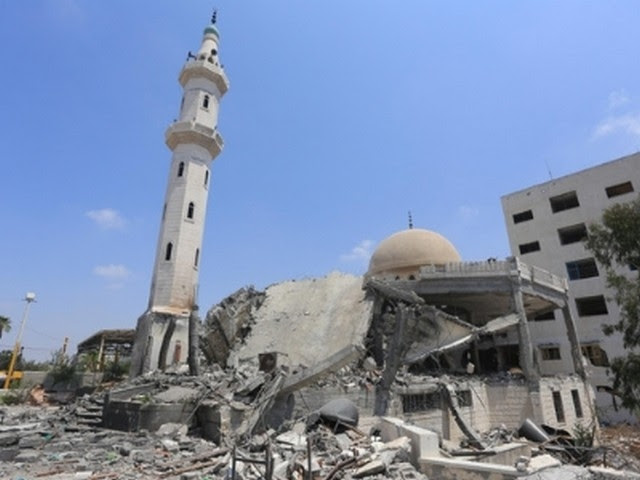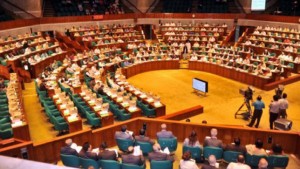Geneva, 26 Nov (Kanaga Raja) – The cumulative economic cost of the Israeli occupation in Gaza on account of prolonged closure and economic and movement restrictions as well as military operations during the period from 2007-2018 is estimated at $16.7 billion, the UN Conference on Trade and Development (UNCTAD) has said.
In its latest report to the UN General Assembly, UNCTAD said that this is equivalent to six times the value of the GDP of Gaza, or 107 per cent of the Palestinian GDP, in 2018.
Scenario analysis suggests that, had the pre-2007 trends continued, the poverty rate in Gaza could have been 15 per cent in 2017 instead of 56 per cent, while the poverty gap could have been 4.2 per cent instead of 20 per cent, it added.
According to the report, in 2020, Gaza has witnessed one of the worst economic performances globally and the world’s highest unemployment rate, and more than half of its population lives below the poverty line.
“The vast majority of the population has no access to clean water, electricity or a proper sewage system, and the Gaza Strip experiences major environmental deterioration,” said UNCTAD.
Lifting what amounts to the blockade of Gaza is essential for it to trade freely with the rest of the Occupied Palestinian Territory and the world and restore the right to free movement for business, medical care, education, recreation and family bonds, it emphasized.
At a virtual media briefing on 25 November, Mr Richard Kozul-Wright, Director of the UNCTAD Division on Globalization and Development Strategies, referred to the impact of the COVID-19 pandemic, saying that back in September, Gaza looked to be in reasonably good shape.
“There was a lot of hope that being isolated, which is a euphemism really for being under siege, which is what the Gaza economy is, and because they have a relatively younger population, that it might be spared the worst of the pandemic. That’s clearly not been the case,” he said.
The health authorities in Gaza have recently announced that they are facing a health emergency. The number of cases has increased significantly – in excess of 14,000 and daily cases are in the range of 700 and rising.
He said this has put hospital beds in Gaza under significant stress and are reaching capacity, and because of the blockade, access to drugs, protective clothing and ventilators is seriously restricted.
“The crisis is now exposing the underlying conditions that have been worsening in Gaza over the last decade and which the report speaks directly to,” he said.
“The other change that will have a bearing on all this is the change of the administration in Washington. We’ve heard with the announcement yesterday of the foreign policy team of President-elect Biden a very different tone,” from what has happened over the last four years, said Kozul-Wright.
“That obviously raises hopes that there may be changes in the relationship between Israel and Palestine,” he added.
Mr Mahmoud Elkhafif, Coordinator of the Assistance to the Palestinian People at UNCTAD, said the cumulative loss of nearly $17 billion means the impoverishment of the people of Gaza.
Had this money been injected into the economy of Gaza, the poverty rate could have been 14 per cent instead of the recorded 56 per cent, he added.
The poverty gap, which measures how deep the poverty is, without the blockade and the military operations, could have been 4 per cent instead of the estimated 20 per cent in 2017, he said.
According to the UNCTAD report, for 13 years, following the take-over of the Gaza Strip by Hamas in June 2007, the Palestinian people living there have been under a prolonged Israeli closure and severe economic and movement restrictions that in effect amount to a blockade.
Effectively, it said, nearly 2 million people are mostly confined to a 365 sq km enclave with one of the highest population densities in the world, and the entry of goods into the Gaza Strip has been reduced to only basic humanitarian products.
UNCTAD said in addition to the prolonged closure and severe economic and movement restrictions, Gaza was the subject of three major rounds of hostilities during a six-year time-span (starting in December 2008) that have resulted in the destruction of the productive base, while the ensuing severe crisis has transformed the Gaza Strip into a humanitarian case and condemned it to profound aid-dependency.
Moreover, the intra-Palestinian division poses significant challenges to the development of Gaza, said UNCTAD.
COST OF CLOSURE, RESTRICTIONS AND HOSTILITIES
According to the UNCTAD report, prior to 2007, Gaza had five border crossing points with Israel for pedestrians and goods: Karam Abu Salem (Kerem Shalom) for goods; Beit Hanoun (Erez) for pedestrians; the Ash Shuja’iah (Nahal Oz) fuel pipeline, closed since 2010; Al Montar (Karni), closed since 2007; and the Sufa crossing point, closed since 2008. Only the first two crossing points remain open, partially and for special cases.
Effectively, the prolonged closure and severe movement restrictions tightly confine 2 million people in an area of 365 sq km.
The economic significance is that trade and factors of production (labour or production inputs) are allowed to move in or out of the Gaza Strip in a severely restricted manner, said UNCTAD.
In addition to its control over the commercial and pedestrian land crossings of the Gaza Strip, Israel controls its sea and airspace.
According to the Office for the Coordination of Humanitarian Affairs (OCHA), Israel has defined a risk zone that ranges from 100 to 500 metres into Gaza near the border and has instituted an access-restricted area or “buffer zone” that ranges from 100 to 300 metres into Gaza, in which farmers’ access is permitted only on foot, with a 100-metre no-go zone along the border with Israel.
Moreover, agricultural land near the fence has been subject to destruction. At sea, the area agreed upon in the Oslo Accords to be open to fishing extends to 20 nautical miles (NM) from the coast, but has rarely exceeded 12 NM in practice.
Only two crossings are currently used for pedestrian travel in and out of Gaza: Beit Hanoun (Erez) to Israel and Rafah to Egypt.
The Erez crossing is controlled by Israel and mainly limited to humanitarian cases or people with special permits, in addition to traders and businessmen. It is the only gateway to the West Bank and East Jerusalem.
Between 2007 and 2018, the Rafah crossing was open for 2,126 days and closed for 2,257 days, with the closure mainly occurring from 2014 to 2017, said the report.
By 2010, three of the four crossings for goods between Gaza and Israel had been shut down. From 2007 to 2010, Israel imposed additional restrictions, allowing into Gaza only basic humanitarian products “vital for the survival of the civilian population”.
From June 2007 until June 2010, an average of 2,400 trucks per month entered Gaza from Israel, compared with 10,400 in 2005.
In 2018, that average increased to 8,970, but it is still below the 2005 figure, when the population of Gaza was 33 per cent smaller than its level in 2018.
According to the Israeli human rights organization Gisha, which cited documents from the Israeli Ministry of Defense, between 2007 and 2010, Israel employed mathematical formulas to determine the minimum amount of goods that could be allowed into Gaza.
Those formulas were based on an estimate of the inventory of basic goods and products, the daily per capita consumption for each good and the number of inhabitants of Gaza.
When a low warning limit was reached for some products, the Israeli authorities increased the inflow of those products, unless there was an intentional reduction policy.
Another constraint on productive activities is the list of “dual-use” civilian goods that Israel does not allow Palestinians to import because they might have potential military applications, said UNCTAD.
The list contains 56 items requiring “special approval” to be brought into Gaza and the West Bank, including civilian machinery, spare parts, fertilizers, medical equipment, appliances, telecommunication equipment, metals, chemicals, steel pipes, milling machines, optical equipment and navigation aids.
For Gaza, said UNCTAD, the list contains an additional 61 items, including construction materials; raw material for the productive sectors, for example, wood and pesticides; medical equipment; and water pumps, which are used during seasonal flooding.
In addition to the prolonged closure and severe economic and movement restrictions, the Gaza Strip was the subject of three consecutive major hostilities over six years that claimed the lives of 3,804 Palestinians and 95 Israelis, said UNCTAD.
IMPACT ON THE ECONOMY OF GAZA
According to UNCTAD, in the 24-year period from 1994 to 2018, the real GDP of Gaza grew by 48 per cent, while its population grew by 137 per cent, resulting in a 37 per cent drop in real GDP per capita.
The latter plummeted from the equivalent of 96 per cent of the West Bank GDP per capita in 1994 to 30 per cent in 2018.
Meanwhile, unemployment in Gaza jumped by 22 percentage points, reaching 52 per cent, among the highest rates in the world.
According to UNCTAD, the Palestinian economy in Gaza has gone through three structural phases. During the period 1994-1999, following the signing of the Oslo Accords, optimism prevailed for a final status solution; the regional Gaza economy grew on average by 6.1 per cent annually, while the West Bank grew by 10.7 per cent.
In 2000, following the outbreak of the second intifada, Israel prohibited Palestinian workers from Gaza from working in Israel.
Between 2000 and 2006, much of the Palestinian public and private infrastructure and institutions was destroyed, and the movement of Palestinian workers and goods was severely restricted.
The Gaza economy grew by just 2 per cent annually between 2000 and 2006 and Gaza continues to suffer from severe restrictions on land, air and maritime movement, coupled with recurrent hostilities since July 2007.
UNCTAD said from the onset of the imposition of the closure and severe economic and movement restrictions from 2007 to 2018, the economic growth of Gaza fluctuated sharply and grew on average by just 0.8 per cent annually, while the West Bank – also under occupation and facing restrictions, measures and control – grew by 6.6 per cent annually.
The share of Gaza in the Palestinian economy halved from 37 per cent in 1995 to 18 per cent in 2018. Prior to 2007, its share in the Palestinian economy had never dropped below 31 per cent and averaged around 35 per cent.
Moreover, investment in Gaza virtually disappeared, falling from 11 per cent of GDP in 1994 to just 2.7 per cent in 2018, while non-building investment remained minimal, at 0.2 per cent of GDP.
UNCTAD said in the 11-year period from 2007 to 2018, the economy of Gaza grew by just 4.8 per cent. Its share in the Palestinian economy contracted by 13 percentage points, from 31 per cent in 2006 to 18 per cent in 2018; GDP per capita shrank by 27 per cent, unemployment increased by 49 per cent and poverty increased by 42 per cent. Almost all GDP components remain below their 2006 levels.
The destruction of infrastructure in Gaza by prolonged closure, severe economic and movement restrictions and recurrent rounds of hostilities have had a grave impact on access to electricity and clean water, as well as on the environment, said UNCTAD.
Electricity shortages have severely suppressed key productive activities. In 2017 and 2018, electricity supply was restricted to 4 to 6 hours a day, and shortages continued to disrupt everyday life and hinder the delivery of basic services.
The availability of electricity in the whole Gaza Strip increased from about 6 hours per day in January 2018 to about 11 hours in January 2020.
However, that does not mean that an average household in Gaza has access to electricity for 11 hours per day, as the electricity supply is insufficient to power all households at the same time, said UNCTAD.
Consequently, the Gaza economy has undergone a reversal in industrialization and agriculturalization, said the report.
The share of agriculture and manufacturing in the regional Gaza economy declined from 34 per cent in 1995 to 23 per cent in 2018, while their contribution to employment fell from 26 to 12 per cent.
“This raises a serious concern related to the future development of the economy of the Gaza Strip and its capacity to realize economies of scale and expand employment,” said UNCTAD.
UNCTAD also highlighted the deterioration of household living conditions and welfare in Gaza between 2007 and 2017.
In its analysis of the evolution of the level and depth of poverty in Gaza over the period 2007-2017, UNCTAD applied two analytical methods: first using a sample from survey data; and second covering the population from the census.
The survey-based method directly uses the sample data in the Palestinian expenditures and consumption survey of 2007 and 2017 to calculate the relationship between total expenditure per adult equivalent and individual, household and location characteristics in the survey.
Taking the Eurostat and European Union definition of the poverty line as being 60 per cent of the national median total household expenditures per adult equivalent, the real poverty lines for the Occupied Palestinian Territory in 2007 and 2017 are $123 and $255 (constant 2015 USD), respectively, per month.
The sample data in the two Palestinian expenditures and consumption surveys indicate severe deterioration in the welfare of households in Gaza between 2007 and 2017, as the proportion of households below the poverty line increased from 46.1 to 64.4 per cent and the poverty gap widened from 15.9 to 25.7 per cent.
According to UNCTAD, one limitation of the above survey-based results is that they are based on relatively small samples.
Recent developments in poverty mapping and small area estimation make it possible to improve the survey-based methods by combining survey and census data, it said.
UNCTAD said to obtain the headcount and depth of poverty, the empirical best prediction method uses a three- step approach: first, the Palestinian expenditures and consumption survey data are used to estimate statistical regression equations of household expenditures per adult equivalent, as well as the household’s characteristics; second, the estimated coefficients obtained from the regressions are combined with the census data (for a much larger number of households) to impute the household’s level of expenditures per adult equivalent; and third, the imputed measures of household expenditures are used to recalculate the headcount and poverty gap measures for each year.
According to UNCTAD, the poverty headcount (rate) in 2007 is equal to 40.1 per cent, lower than the 46 per cent estimate of the survey-based method.
This rises to 56 per cent in 2017, which is lower than the 64.5 per cent estimate of survey-based method, yet still demonstrates a very large increase over the 10-year period.
Concomitantly, the empirical best prediction measure of the poverty gap in Gaza increases from 13.9 to 19.9 per cent between 2007 and 2017.
UNCTAD said while the magnitudes are lower than those of the survey-based method, they are still extremely large.
According to UNCTAD, the annual minimum cost of lifting people out of poverty quadrupled from $209 million in 2007 to $838 million in 2017.
It said that the difference of $629 million (constant 2015 USD) between those years measures the cost of the prolonged closure and severe economic, movement restrictions and recurrent hostilities in terms of poverty.
The difference represents 22.3 per cent of the Gaza GDP, or 4 per cent of the Occupied Palestinian Territory GDP, in 2017.
“This points to the degree of the cost of reversing the impact of the Israeli closure, restrictions and recurrent hostilities on the welfare of households in Gaza,” said UNCTAD.
UNCTAD said its analysis indicates that Gaza has suffered heavy blows to its economy and environment, as well as to the well-being of its population.
Based on Gaza growth trends prior to 2007 and the relation between the regional economies in Gaza and the West Bank, two counterfactual growth paths (scenarios) were assessed, it added.
The actual historical economic performance in Gaza during the period 2007-2018 is used as a baseline scenario for estimating the potential economic losses.
Scenario 1 assumes that the Gaza economy follows its own average historical growth for the period 1995-2006 and would continue to grow by 3.7 per cent annually from 2007 onwards.
Scenario 2 assumes that, after 2007, the share of Gaza in the Occupied Palestinian Territory’s economy remains the same as in 2006.
That assumes that Gaza grew at the same rate as the West Bank, i.e. 6.6 per cent annually, during the assessment period 2007-2018.
According to UNCTAD, scenario 1 suggests that the annual real GDP of Gaza would have been, on average, 23.3 per cent higher than the baseline scenario, and that the cumulative economic (GDP) loss for the period 2007-2018 could reach $7.8 billion (constant 2015 USD), or 50 per cent of the Palestinian GDP in 2018.
Scenario 2 indicates that the GDP of Gaza could have been, on average, 50 per cent higher than the baseline, and the cumulative economic (GDP) loss for the period could be $16.7 billion (constant 2015 USD); or 107 per cent of the Palestinian GDP in 2018.
As for the real per capita GDP, scenario 1 estimates that it could have reached $2,153 (constant 2015 USD) in 2018, or 46.7 per cent ($695) higher than the baseline level.
Scenario 2 estimates that real GDP per capita could have reached $2,997 in 2018, which is $1,539 or 105.5 per cent higher than the actual level recorded in that year.
UNCTAD said that the increasing burden of poverty in Gaza calls for an immediate response. Economic growth should be restored, and the economic trajectory should be freed of the prolonged closure, the severe economic and movement restrictions and the attendant destruction, it added.
CONCLUSIONS AND RECOMMENDATIONS
UNCTAD has recommended that the international community, Israel and the State of Palestine consider the following:
(a) Only by fully lifting the debilitating Israeli closure, in line with Security Council resolution 1860 (2009), can we hope to resolve sustainably the humanitarian crisis.
Furthermore, the indiscriminate launching of rockets and mortars towards Israeli civilian population centres is prohibited by international humanitarian law, and Palestinian militants must cease that practice immediately.
Gaza should be allowed to trade freely with the rest of the Occupied Palestinian Territory, as well as with neighbouring Arab and global markets, and free movement should be restored for businesses, medical care, education, recreation and family unification.
(b) Priority should be given to the reconstruction of infrastructure, private and public structures and the productive base of Gaza, as well as the construction and operation of air and seaports.
(c) The electricity crisis should be addressed by rehabilitating, upgrading and securing fuel for the operation of the Gaza power plant at full capacity and constructing a water desalination plant to secure clean water supply for the population.
(d) The State of Palestine should be enabled to develop the offshore natural gas fields discovered in the 1990s in the sea area off the coast of Gaza. As elaborated by UNCTAD, this would secure the required resources for the rehabilitation, reconstruction and recovery of the local Gaza economy.
Furthermore, given the widening gap in the living conditions between Gaza and the West Bank, it is critical that the important Egyptian-led intra-Palestinian reconciliation efforts continue, said UNCTAD.
Gaza is and must remain an integral part of a future Palestinian State as part of a two-State solution, it added.
“It is high time to reintegrate it politically, administratively, fiscally, economically and socially, including East Jerusalem. The international community can play a key role in that regard,” UNCTAD concluded.
(Published in SUNS #9242 dated 27 November 2020)
– Third World Network




